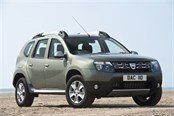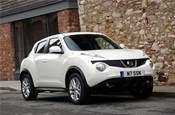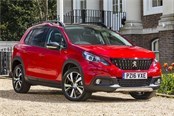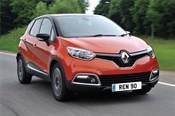Citroen C4 Cactus
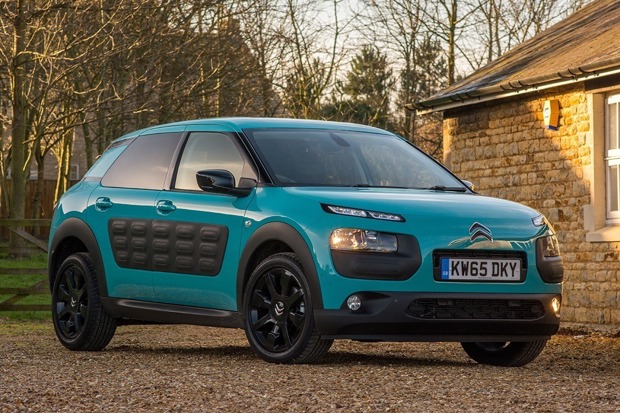
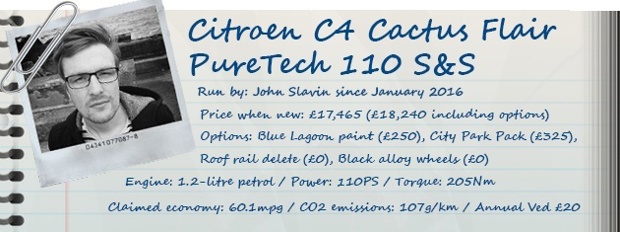
- Welcome to the fleet, Cactus
- How does the Cactus drive?
- 10 Things you need to know about the Citroen C4 Cactus
- Let’s talk about air bumps
- Counting cut costs
- Covering distance in the Cactus
- Mehari, you Jane
- Where are my buttons?
- Which engine is the best fit for the Cactus?
- How affordable is the Cactus?
- What are the alternatives?
- Bon Voyage, Cactus
Welcome to the fleet, Cactus
We have a bright blue new arrival, which promises to be the most vibrant and most interesting car in the Honest John fleet for the next six months
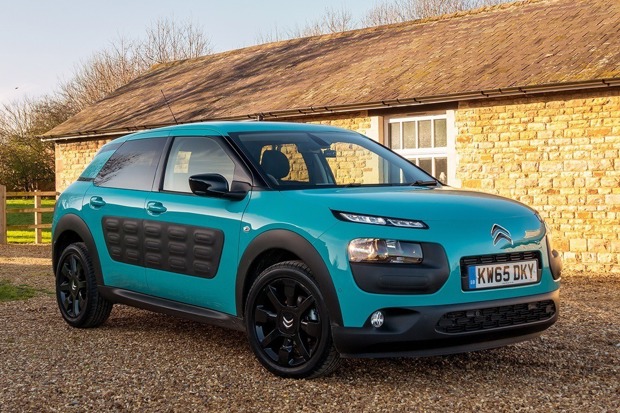
Date: 1 February 2016 | Current miles: 305 | Claimed economy: 60.1mpg | Actual economy: 45.5mpg
This, in all of its Blue Lagoon glory, is our Citroen C4 Cactus in Flair trim. It’ll be the most vibrant member of the Honest John Our Cars fleet for the next six months, over which time I’m going to find out how practical and user-friendly something so idiosyncratic can be.
Our car is powered by the most powerful PureTech petrol engine, with 110PS, but there are also 75PS and 82PS petrol engines and a 100PS BlueHDi diesel. Flair is a higher trim level, so comes with plenty of useful kit including navigation, Bluetooth, a reversing camera, cruise control, auto lights and auto wipers.
That doesn’t leave many boxes to tick on the options list, but I specified Blue Lagoon paint at £250 and the City Park Pack at £325. The latter will automatically operate the steering when reverse parallel parking or when pulling out of a parallel parking space, with the driver operating the clutch, brakes, throttle and gears.
I also specified a couple of no-cost options – specifically black alloy wheels in place of silver and deleted roof bars. When the car first turned up I wasn’t so sure about the looks without roof bars, but after a few days I got used to the sleeker styling, which makes the Cactus look more like a car and less like a small SUV.
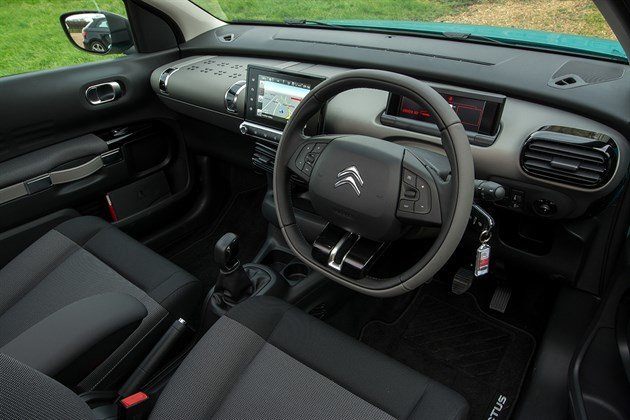
Our Cactus is sporting a rather conservative interior compared to the outside
According to Citroen, the most popular colour for the Cactus in the UK is black, which I think is a real shame. The contrast of black air bumps against bright blue paintwork, or chocolate air bumps against pearl white paintwork really accentuates the unique and interesting styling – the C4 Cactus is, after all, one of the most striking looking cars on sale so why not show it off?
I didn’t specify any options inside the cabin, so my Cactus has black cloth upholstery with grey highlights. Those who want to add a bit more personality to the cabin can choose beige, blue or purple highlights with cloth upholstery, or leather upholstery with purple or beige highlights.
Other options I chose to ignore include a glass roof, red exterior details and a ‘Connect Box’ which adds vehicle tracking, mapping data, vehicle monitoring including a virtual servicing log, and emergency assistance, without connecting a phone over Bluetooth.
So far the C4 Cactus has only covered a few miles, but first impressions are good. It gets plenty of attention from other drivers, it’s comfortable, it’s easy-to-drive and performance is good. Official economy is 60.1mpg, but the engine isn’t quite run in so my figures are fluctuating. More on economy – and every other aspect of the Cactus – in later updates.
How does the Cactus drive?
It looks quirky and unusual, like Citroens of old - but does the C4 Cactus drive as well as some of its ancestors?
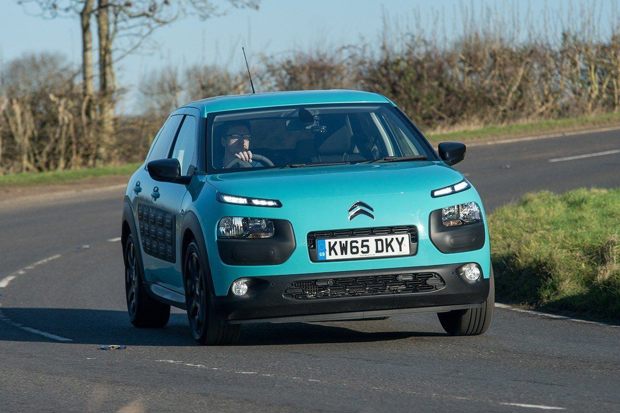
Date: 15 February 2016 | Current miles: 369 | Claimed economy: 60.1mpg | Actual economy: 45.1mpg
With the C4 Cactus, Citroen has gone back to what made it such a great car maker in the 1970s and 1980s. It’s a quirky, interesting car, plus – perhaps most importantly – it’s comfortable. It’s not magic-carpet, hydropneumatic suspension comfortable, but it makes light work of speed bumps and potholes in a way many small family cars can't.
Fortunately, despite the relatively soft suspension, the Cactus is still fun to drive – it treads the line between easy everyday usability and enjoyable handling very well. There’s plenty of traction and body control is fairly well controlled, so tackling a fun B-road isn’t a chore – plus the 110PS petrol engine we chose for our car is responsive and sounds good too.
It’s no hot hatch, of course. 0-62mph takes 9.3 seconds and the five-speed manual gearbox could be slicker – but there’s just enough performance to put a smile on your face. The rest of the time, when stopping and starting in town or cruising on the motorway, the Cactus is stress-free and relaxed – it has the perfect mixture of characteristics.
Parking is fairly straightforward, since visibility is good and there's a reversing camera that, while lacking the impressive functionality of a Nissan 360 degree system, is clear. Reversing into parking bays isn’t particularly challenging, nor is parallel parking – but I specified an optional parking assistance system to help out. Unfortunately I didn’t realise it only copes with parallel parking spaces, rather than bays.
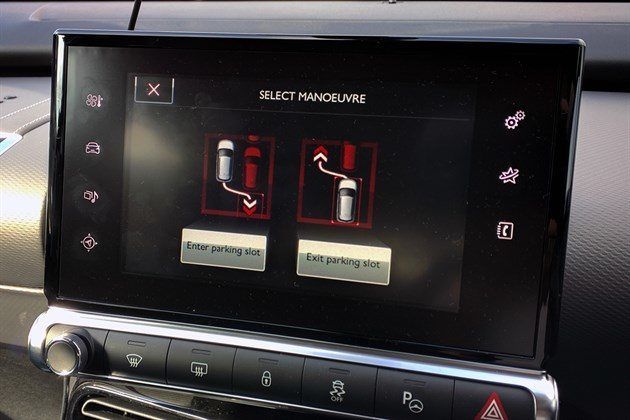
Useful if you have on-street parking, otherwise not so much
That’s a shame, because both at home and at the office I park in a bay space. In fact, so far I have only had to parallel park once – but the system works very well indeed. There’s a button under the infotainment screen that starts the system up, after which the driver indicates in the direction they’d like to park.
The car then asks the driver to proceed at up to 20mph, during which time it scans for a space. If it finds one large enough, it flashes up on screen and gives instructions. All the driver needs to do is choose first gear or reverse and control throttle and brakes – the steering is taken care of and prompts to stop or move are displayed on screen.
The system will happily and neatly park the Cactus into very small spaces, plus it can be used to unpark if you end up boxed in. With hindsight it probably wasn’t worth choosing on our car since it won’t be used very often, but if you have on-street parking in a busy town it could make life a whole lot easier.
So far I’m very pleased with the way the Cactus drives – though I’ve yet to take it on an extended journey, so it remains to be seen how comfortable the soft seats are over more than a hundred miles on the motorway. But that will happen before my time with the Cactus is up, so stay tuned.
10 Things you need to know about the Citroen C4 Cactus
Watch Mark Nichol's video on the Cactus, covering 10 things you need to know about the fun French family car.
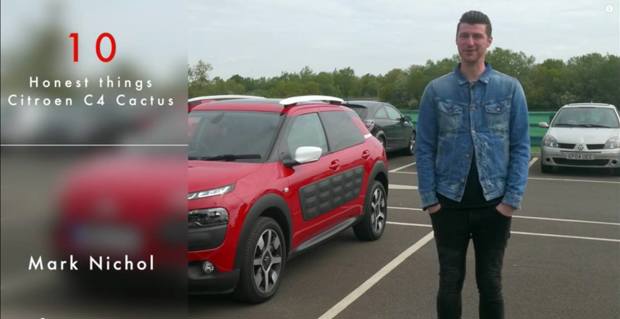
Date: 29 February 2016 | Current miles: 563 | Claimed economy: 60.1mpg | Actual economy: 45.3mpg
As family cars go, the C4 Cactus manages to genuinely stand out. Even if it does happen to have what appears to be bubble wrap on the doors. So what else do you need to know? Mark Nichol talks you through the important points.
Let’s talk about air bumps
Those black bits adorning the C4 Cactus aren’t just for show – they’re like automotive bubble wrap. In
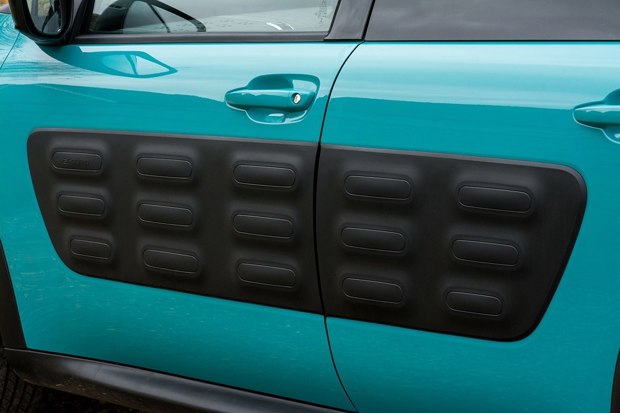
Date: 14 March 2016 | Current miles: 765 | Claimed economy: 60.1mpg | Actual economy: 45.3mpg
Paris. The Eiffel Tower. The Louvre. Impossible parking spaces. Dents. Any car that spends any length of time in the French capital will, eventually, end up with a parking wound somewhere – so it stands to reason that someone, somewhere French would come up with a solution. Turns out it’s Citroen, with air bumps.
Those black bits adorning the C4 Cactus aren’t just for show – they’re like automotive bubble wrap. In fact, the air bumps on the side of the car are just like real bubble wrap, with little impact absorbent pockets that spring back when pressed. If someone opens their door against the side of your Cactus – no problem.
The side air bumps are split in the middle, meaning there’s a little bit of protection on the edges of the front doors, reducing the chance of them damaging other people’s vehicles when doors are opened a bit to suddenly. Unfortunately, there’s nothing to prevent the rear doors – the ones typically used by kids - damaging neighbouring cars.
There’s a couple of extra air bumps under the front headlamps– just in case you need to nudge a badly parked Renault Twingo out of the way. The tailgate, too, has an area covered in protective rubbery plastic. It’s placed so that you can open the tailgate against a wall without scraping the paintwork, plus there is an air bump under each of the rear lights.
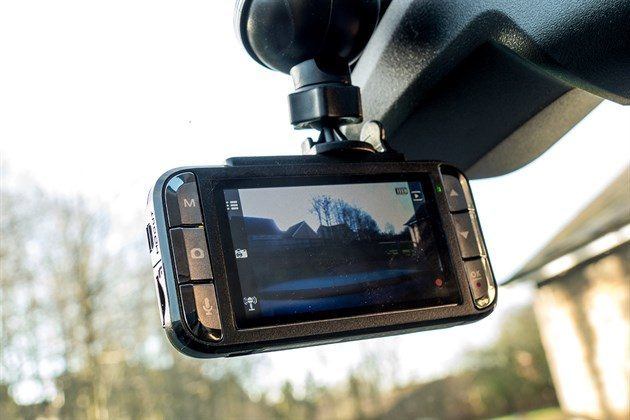
For when air bumps aren't enough
You might think all these squishy, damage absorbing bits would make for a low insurance group, but surprisingly the C4 Cactus is no better than other small family cars. That’s not to say it’s expensive to insure, of course – there’s just no real insurance benefit for having air bumps.
Having said that, the air bumps will make a real difference to people who live in tight urban areas where parking spaces are small. Anyone who has had a child scrape a bicycle down the side of their car, or who has bumped a shopping trolley off their boot will also appreciate the extra protection.
It’s smart stuff, but air bumps are only so much use – at anything faster than a standstill they won’t prevent serious damage. Fortunately, in preparation for any potential disaster, I’ve got a dash camera fitted in my Cactus. Initially, when it arrived I fitted an Abee M7, a fairly affordable, high-resolution camera, there's a review here.
But this has since been sent off to do perform other duties, so it has been replaced by a Nextbase Duo, which records both front and rear simultaneously, so it should capture plenty of detail whatever direction a collision comes from. Fortunately, nothing has happened so far that was worth recording.
Counting cut costs
John goes over the Cactus with a fine tooth comb to find the areas where Citroen has shaved off cost and weight.
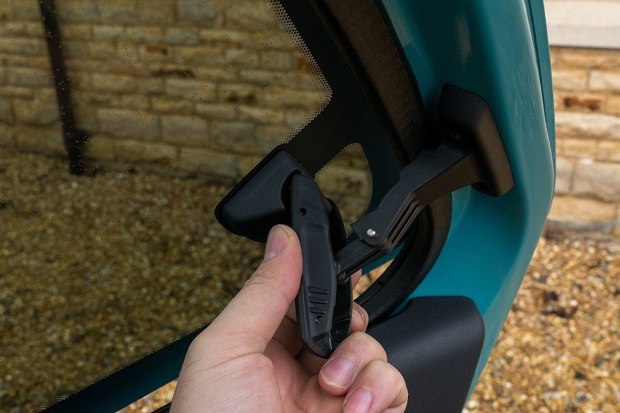
Date: 28 March 2016 | Current miles: 1368 | Claimed economy: 60.1mpg | Actual economy: 45.3mpg
With a starting price of £12,990 and as much space as a Volkswagen Golf, it’s fair to say the Cactus offers good value. That is very much down to Citroen economising – cutting out anything superfluous or unnecessary in order to bring costs down. That might be bad news for some, so I gave the Cactus a once over to see where the pennies have been pinched.
Firstly, to save on paint costs those little black details on the rear pillar and surrounding the windows are actually stickers. No problem there, really – that’s a smart move on Citroen’s part. And the rear windows themselves? They don’t wind down – they only pop out. On the plus side, the space freed up by having no window mechanism provides a big storage area for large bottles.
And your rear-seat passengers might well need those bottles, since they’re probably going to get warm – there is no ventilation for the back row, whether at face or foot level. Back-row passengers might get a bit frustrated on the move too – there is no central arm rest and there are no grab handles in the roof. Fortunately, there are Isofix points to lock in child seats.
But if you’ve got anything bulky to carry, the child seat and rear-seat passengers will have to stay at home, because the rear seats don’t split fold. You’ll have to drop all three if you want to haul anything big – and getting it in and out might be tricky because of the load lip. That could be made flush with a sturdier, two-layer floor, but that adds cost.
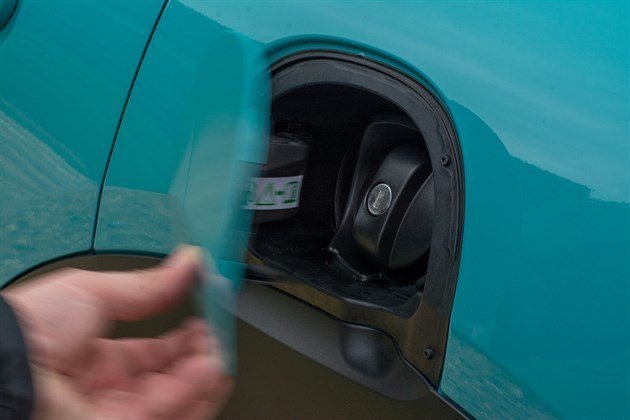
The fuel filler is not linked to the central locking
There is a space for a spare tyre, but they’re heavy and more expensive than a tyre repair kit, which is what Citroen provides as standard. Pleasingly, Citroen hasn’t cut too many corners up front – but the bean counters haven’t stayed away completely – you can see where the steering column goes through the firewall if you look at the driver's footwell, for example.
Another omission is a passenger-side air vent, but the pay-off for leaving out the air-con plumbing (and for moving the airbag up to the roof, not a cost-cutting measure) is a huge glovebox that opens like a treasure chest. Front-seat passengers aren’t totally forgotten though – there is a vent in the centre stack for them to use.
More or less everything to control air conditioning, trip computers, audio and everything else is located within the touchscreen system, meaning very few physical switches, knobs and dials. That means fewer parts to manufacture and fit – another cost reduction on the line. There are more small cost-saving measures that are less obvious, too – like the lack of auto-down on the electric windows, or the old-fashioned fuel filler.
But oddly, despite all of these little cutbacks and tweaks by Citroen, it hasn’t really annoyed or frustrated me over the past few months – but it’s typically just me and one passenger in the car. Maybe if I had children and needed to regularly use the back row of seats I’d have issues.
Covering distance in the Cactus
A few longer journeys show up some weaknesses with the Cactus – but also some strengths.
Date: 11 April 2016 | Current miles: 1763 | Claimed economy: 60.1mpg | Actual economy: 47.3mpg
Since my Cactus arrived it’s largely been used on short journeys and for commuting – but a few longer motorway trips have given me the opportunity to test its comfort and user-friendliness more fully. For the most part it is a perfectly capable car for longer trips – but there are a few little niggles.
The most noticeable issue is the comfort of the driver’s seat. It’s tremendously soft and squishy, which is a good thing on the whole - for trips to the shops or commuting it makes for a nice and relaxing drive. However, on a longer trip the lack of support, particularly lower back support, means a break is needed every hour or so to stretch weary bones.
You should stop regularly when driving a long distance anyway, of course – but I find myself needing more breaks in the Cactus than in other cars. On the plus side, the Cactus has cruise control that is fairly easy to use, along with a speed limiter. The latter is often more useful than the former, especially through an average speed camera zone.
The tablet-style infotainment screen, while occasionally fiddly, makes listening to music via Spotify on the go very easy. There’s a scroll-style controller on the steering wheel for skipping tracks, but it’s a little too easy to skip more than one track at a time and there is some lag, probably down to the Bluetooth connection.
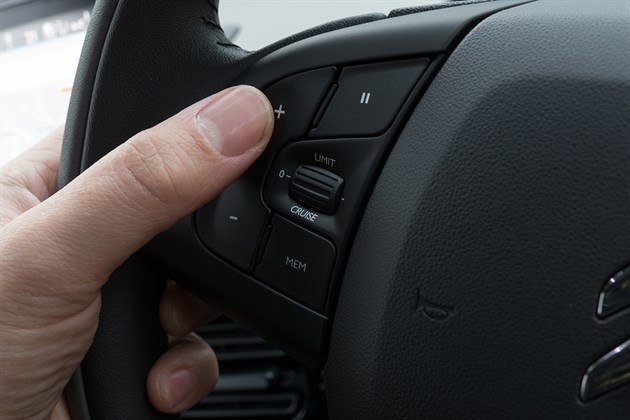
Speed limiter and cruise control make life easier
But really it’s just a case of getting used to things, which I already am – so skipping tracks and changing volume doesn’t require me to take my eyes off the road. It’s not all effortless, though. Changing the fan speed or temperature means navigating through touchscreen menus, which isn’t a good thing to do on the motorway.
The same is true of making a hands-free call, although even if making a hands-free call was effortless it’s still not the best idea in the world - and is something I tend to avoid. Receiving a call is rather easier, since it fills the infotainment screen with big buttons to accept or reject the incoming call.
At motorway speeds the Cactus is generally quiet, but the five-speed transmission could do with a sixth gear, if not for the sake of noise then to improve economy. It’s easy to achieve around 50mpg on a long run, but an even better figure would be possible with a sixth gear ratio. Officially the car is capable of 60.1mpg.
That said, 50mpg on a long run isn’t too bad, especially for the most powerful petrol engine in the Cactus range. Owners of BlueHDi versions are reporting almost 70mpg in Real MPG, which is short of the official figure but spectacular compared to more or less everything else in Real MPG. Apparently those weight saving measures have paid off.
Mehari, you Jane
Citroen's old Mehari beach buggy has inspired a new Cactus-based concept, which may make production.
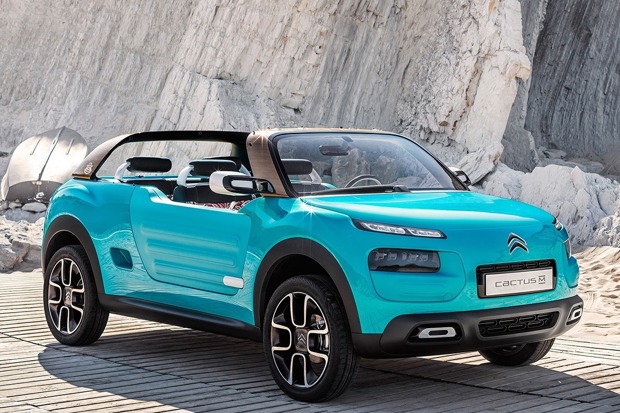
Date: 18 April 2016 | Current miles: 1963 | Claimed economy: 60.1mpg | Actual economy: 47.1mpg
Citroen used to be famous for making mad cars like the DS, SM and 2CV. One that we didn’t see many of in the UK was the Mehari, a Dyane-based beach buggy produced from 1968 to 1988. With its flat sides and pared-back design it’s plain to see some similarities with the lightweight C4 Cactus.
In fact, the Mehari has influenced the Cactus so much that Citroen has paid homage to it with a concept car. The Cactus M concept debuted at the 2015 Frankfurt Motor Show and while it’s obviously a little impractical for real-world use, don’t completely write off the possibility of seeing a production model one day.
Citroen used a 110PS petrol Cactus, like mine, as the basis for the Concept M, but then chopped off the roof and converted the body from five-door to three-door. The most obvious difference is the lack of a roof – the Concept M does have a removable fabric affair but getting it on and off is quite involved. Not ideal in a thunderstorm.
But the Concept M is obviously more at home on a beach than anywhere else, much like the Mehari was. The ride height has been increased and Citroen’s Grip Control system has been installed. This retains the front-wheel drive layout, but onboard computers help improve traction, with settings for different surfaces including sand.
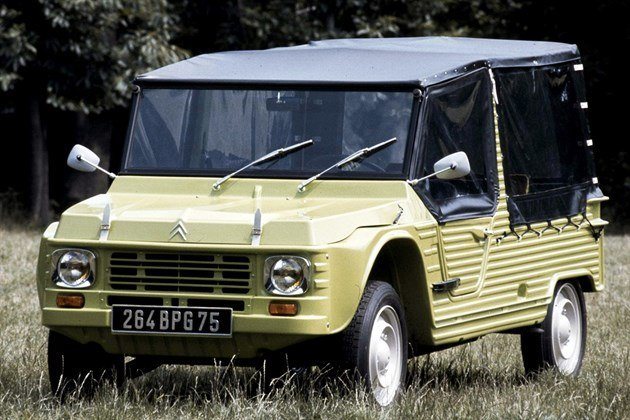
Citroen at peak oddness
Inside, the seat covers are much more lively than in any production Cactus, with bright red seats trimmed in the same material as wetsuits, so occupants can get in without drying themselves after a dip in the sea. The rest of the interior is minimalist, with little to damage or get wet, plus there are drain holes under the floor mats so if things get sandy the cabin can be rinsed down with a hose.
And what if you’re enjoying the beach so much you don’t want to leave? Then don’t. The Concept M can be converted into a tent, by changing the configuration of the fabric roof. Inflatable tent poles, which can be blown up via a built in compressor, hold the fabric in place, freeing up enough space to stand.
The seats can be folded down to make beds, too – so the Concept M is the perfect car for a break on the south coast of France. Or down the beach from Skegness, provided the forecast is good. Public reaction to the car at the Frankfurt Motor Show was strong, so it’s possible we’ll see a production model eventually.
That said, the production car will probably have more in common with the regular Cactus than the concept, with a more traditional folding fabric roof design like that used on the DS 3 Cabriolet. We wouldn’t bet on there being a tent conversion option either – but we can always dream.
Where are my buttons?
The C4 Cactus has a big touchscreen that controls pretty much everything – but is this progress?
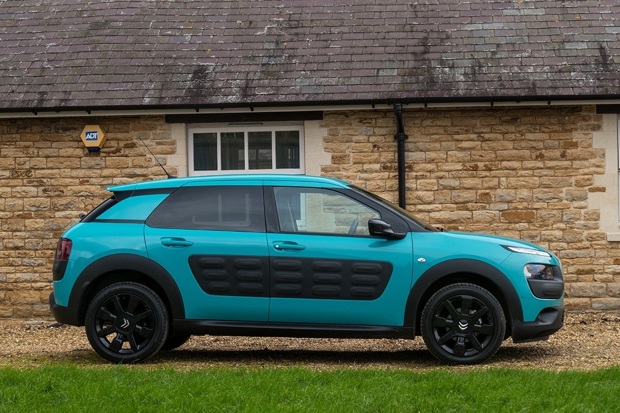
Date: 25 April 2016 | Current miles: 2158 | Claimed economy: 60.1mpg | Actual economy: 46.8mpg
Remember when mobile phones had numbered keys that clicked when you pushed them? Those were the bad old days. Smartphones, with their clever touchscreens, are far more user-friendly and offer much more versatility than old-fashioned phones. It’s easy to understand why car makers have started going down the same route for infotainment.
Citroen has embraced the touchscreen wholeheartedly for the Cactus. The audio, navigation, car settings and ventilation are all controlled from the touchscreen, which has no physical buttons at all except a volume dial – everything is touch sensitive and while for the most part the system is responsive, the lack of physical buttons can be a problem.
The ventilation controls are a good example. There is a shortcut key to get to the temperature menu, but if I want to change the fan speed I have to go from one screen to another, then press the right section of the screen. With an old-fashioned dial I can do that by feel, keeping my eyes on the road.
In defence of the Cactus there is a shortcut at the top of the touchscreen to quickly change temperature on the go, but sometimes some other setting needs to be altered. On the plus side there are controls on the steering wheel, which make skipping tracks or changing the volume easy without taking eyes off the road.
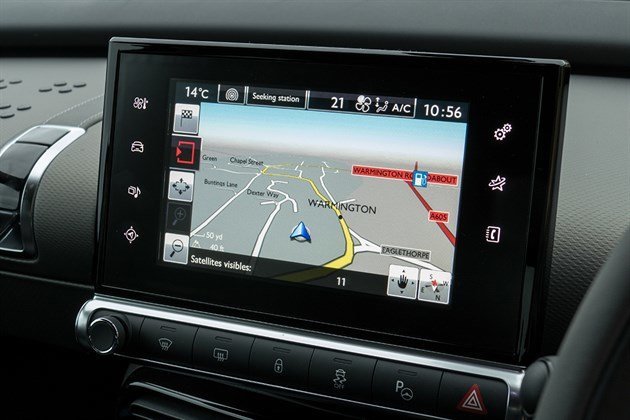
A Citroen touchscreen, yesterday...
There is a row of buttons under the touchscreen too, but these are for locking or unlocking the doors, initiating the automatic parking system or switching on the hazard lights – things that aren’t often needed when driving along on the motorway at 70mph, when you might need to navigate through menus on the screen.
It’s not the end of the world though. After some familiarisation most of the menus become fairly intuitive and the screen responds well to inputs for the most part, it just lacks the tactility of traditional buttons, dials and switches. Maybe I’m just old fashioned, but I really think the old ways are safer.
Aside from the lack of buttons, life with the Cactus has been easy over the past few weeks. The audio system is surprisingly powerful, listening to Spotify via Bluetooth is fairly straightforward and the air conditioning keeps things cool – there’s not really a lot to think about or complain about.
I’ve even got used to all the stares other road users give the car. My Cactus is particularly vibrant, so it does get a lot of attention but, for the most part it’s positive. It’s not unusual to see someone creeping up close behind in a traffic jam to get a good look at the badge, or beaming with a happy smile from the pavement.
Which engine is the best fit for the Cactus?
The 110PS petrol in our Cactus is a great fit - but there are other options, including an economical diesel.
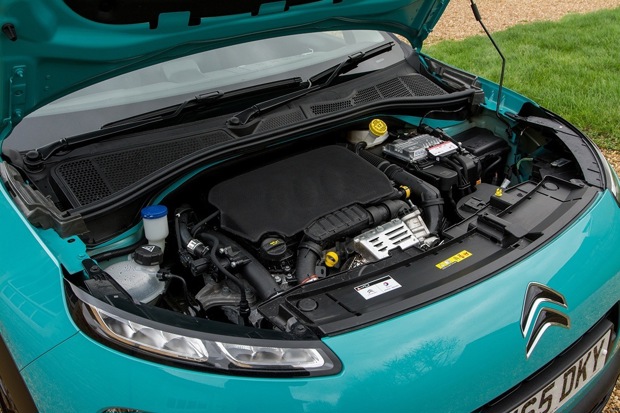
Date: 16 May 2016 | Current miles: 2369 | Claimed economy: 60.1mpg | Actual economy: 47.2mpg
Our Citroen C4 Cactus has a 1.2-litre 110PS PureTech petrol engine, but it isn’t the only engine choice. Citroen also sells the Cactus with a 75PS version and an 82PS version of the same three-cylinder engine, plus there is a BlueHDi diesel with 100PS. The 82PS PureTech and the BlueHDi engines are both available with an automatic option too.
So why did I pick the 110PS petrol? It all comes down to my type of driving. Day-to-day I cover a short commute of around 15 miles each way on a roughly 50/50 mixture of dual carriageway and country roads, plus I do short trips here and there, mixed with the occasional long motorway journey.
In terms of mileage, the Cactus is likely to cover around 8000 miles annually in my hands, so a diesel seemed like a false economy. Using our Fuel Cost Calculator, based on official figures, it would take me 49,053 miles to pay off the £730 premium for picking diesel which, at 8000 miles per year, is six years of driving.
Based on Real MPG figures it would take a more reasonable three-and-a-half years to pay off the premium for picking diesel, but even so I’d still be better off with a petrol, at east from a personal point of view. But, since I spend a fair bit of time on the motorway it made sense to go for the more powerful petrol option, which makes overtaking easier and cruising a touch quieter and more relaxed.

This is where the petrol goes...
It’d be nice to have an auto for those long trips, but that option doesn’t exist for the 110PS petrol and, in all fairness, even if it did I’d be reluctant to choose it. Citroen has opted to fit offer automated manual transmissions in the Cactus instead of a dual-clutch or torque convertor automatic. That’s fine if you absolutely need an auto, but if you want one as a luxury then think twice – they are slow and jerky.
Our Cactus has a five-speed manual, which is probably the least satisfying part of the car overall. It’s perfectly adequate and it does the job of selecting gears well enough, but the action of the gearstick is imprecise. The clutch pedal could be smoother too, but in the grand scheme of things both problems are minor.
Economy-wise, the Cactus is averaging close to 50mpg, which isn’t at all far off the official figure of 60.1mpg. Interestingly, Real MPG users aren’t doing quite so well – the current average there is 41.3mpg. Of all the engines, the one Real MPG users are doing best with is the BlueHDi diesel.
It is still falling short of the official figure, but in everyday driving users are getting more than 60mpg, making the C4 Cactus diesel one of the most economical small family cars on sale – and one of the most economical cars overall. I still think I did right picking the petrol, though…
How affordable is the Cactus?
We look at some of the ways you can end up driving a new Cactus, including SimplyDrive.
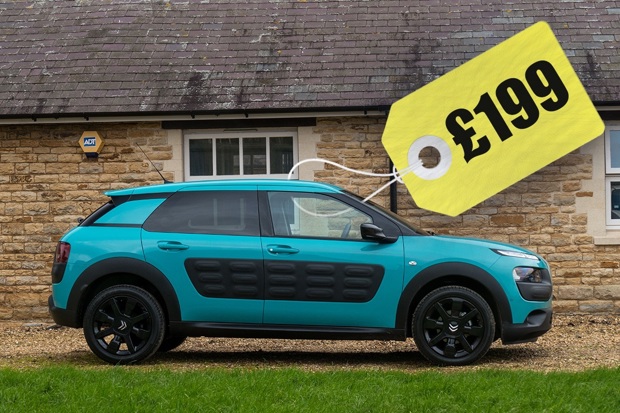
Date: 30 May 2016 | Current miles: 2863 | Claimed economy: 60.1mpg | Actual economy: 46.5mpg
There’s a lot to think about when buying and running a car. The monthly payment, annual road tax, insurance, servicing, roadside assistance… it’s all often quite expensive. Citroen has attempted to get around the complexities with SimplyDrive, which is a finance package that covers pretty much all the expenses apart from fuel.
The example on the Citroen website costs £199 per month over 35 months with a deposit of £3477. That cost covers insurance, routine servicing, roadside assistance, warranty and VED. That price is for a basic 82PS PureTech model in the fairly spartan Feel trim though – so you’ll have to pay more for nice equipment levels or a livelier engine – our Cactus 1.2 PureTech Flair would be appreciably pricier.
Terms and conditions apply too, obviously. These affect the insurance, more than anything – a telematics box is required for 18-21-year-olds, unless they have two years no claims. Drivers of 21 years and over don't need the box provided they have held a full licence for two years. There are other limitations, including mileage restrictions.
But, provided you ask plenty of questions at the dealer, to be sure it suits your needs, the SimplyDrive scheme looks like a very easy way of running around in a new Cactus. Strip out all of the extras like insurance and maintenance and it’s essentially a PCP deal, which means there is a balloon payment at the end of the term.
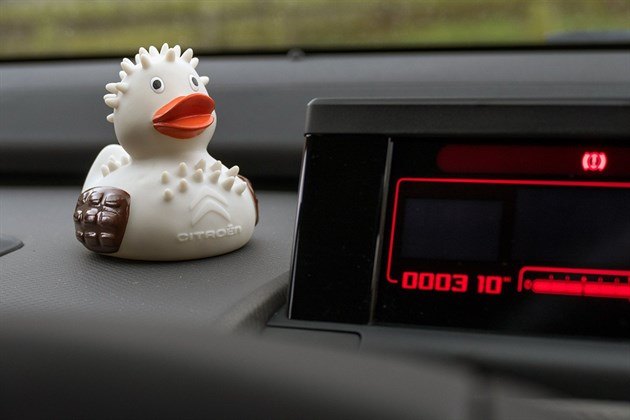
Cactus Ducks aren't standard equipment
So you can pay up at the end of term, meaning you can keep the car, or the car can be handed back to the dealer. Also, if there is any equity left in the vehicle (value above the guaranteed minimum future value quoted when the deal started) then it can be used as towards the deposit for something else.
If you’re not too fussed about Citroen bundling your costs together then there are plenty of lease, hire purchase and PCP deals too, but they are more competitive if you go through an online broker. Essentially they do all the haggling in advance and get a better deal. Most deliver the car too.
If you’re planning on financing a Cactus then there are lots of important points to consider – so be sure to check our car advice section for tips on finance types and how to avoid problems. It’s also full of handy advice to help save even more money when buying a car.
Considering the low monthly cost a Cactus can be purchased for it’s easy to understand why it’s so popular with visitors to HonestJohn.co.uk. For not much more than the monthly cost of a small hatchback, buyers can have four doors, a good boot and plenty of rear legroom.
What are the alternatives?
The C4 Cactus has a nice niche to itself, appealing to buyers who aren’t quite committed to a crossover. But there are alternatives...
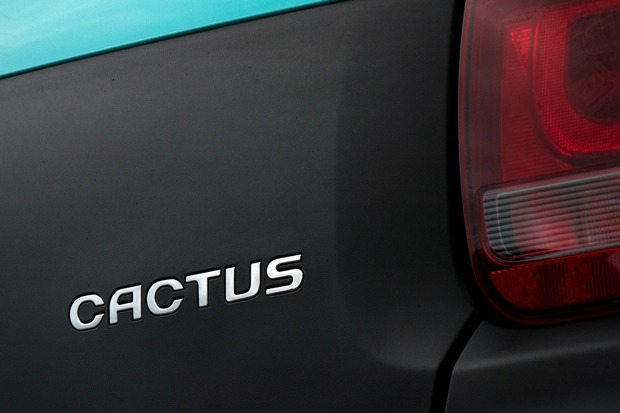
Date: 13 June 2016 | Current miles: 3261 | Claimed economy: 60.1mpg | Actual economy: 47.1mpg
With its stand out looks, spacious cabin and sensible pricing, the C4 Cactus has a nice niche to itself, appealing to buyers who aren’t quite committed to a crossover. But there are alternatives that offer similar space for roughly the same price – here’s a rundown of some Cactus rivals.
If you’re on a tight budget then the Duster will hold plenty of appeal, since it’s priced from just £9495. However, unlike the Cactus - which manages to be charming despite its fairly low price - the Duster feels a bit like a fridge or a washing machine. It’s like a white good, built for a purpose.
It’s practical though, with a decent boot and a good amount of passenger space in the back row. The engine range isn’t great, the plastics feel cheap and everything looks like it has been lifted from 1999 – but if you need a cheap price tag over all else then it’s ideal.
If unusual looks matter more than practicality, then the Juke is possibly the best alternative to the Cactus. The back seats are tight and the boot is small, but it’s fun to drive, costs roughly the same as the Cactus and has unique styling. It might be ubiquitous these days, but despite having been on sale for years it still looks striking.
There’s even a high performance version of the Cactus engine range leaves you yearning for more punch – but it’s not the best performance car around. That said, the 1.2-litre turbocharged petrol fits the Juke’s character well and it’s reasonably economical too.
The 2008 is available with some of the engines Citroen fits to the Cactus, but with more traditional crossover styling. It’s an easy car to drive and it’s practical, but it lacks the characterful styling of the Cactus and it doesn’t represent the same value for money.
It’s still a good choice of crossover though, particularly since it was revised recently. If you want an automatic gearbox then the 2008 is a better choice than the Cactus because it’s EAT6 transmissions is far smoother than the jerky automated manual used by Citroen.
Another crossover, this time a little smaller than the 2008. The Captur is good to drive and is available with very affordable finance packages. One thing that sets the Captur apart from rivals is how well-reviewed it is by owners on honestjohn.co.uk.
One owner, having covered 100,000 miles in her Captur, has ordered another one to replace it since she has got on so well with it. It’s easy to drive, but prices are slightly higher than in the Cactus and it isn’t quite as practical nor as nicely finished inside.
Bon Voyage, Cactus
It’s time to say farewell to our vibrant, bubble-wrapped Citroen after six months of largely trouble-free driving.
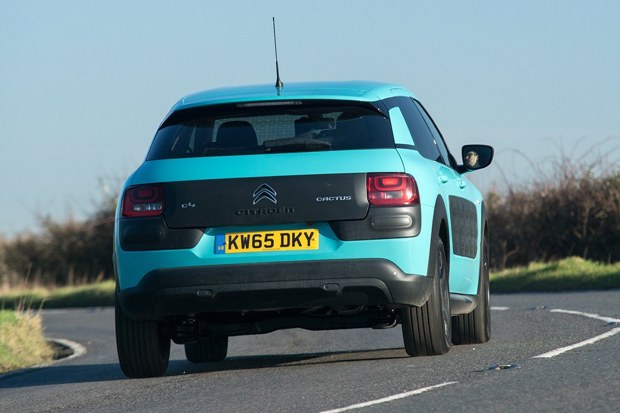
Date: 28 July 2016 | Current miles: 4002 | Claimed economy: 60.1mpg | Actual economy: 47.0mpg
It’s time to say goodbye to the Cactus. Since it arrived in January 2016 it’s covered just over 4000 miles, most of which have been on the mixed route to and from our office. During that time nothing has broken, failed or gone wrong, which is always a good sign – but it hasn’t been totally painless.
Fortunately, all of the problems have been little niggles, rather than major drawbacks. The most noticeable problem has been the transmission, which has a sloppy, inaccurate gear change and a weirdly high clutch biting point. It takes a minute or so to get used to after being in another car, and I move from car to car regularly.
That said, once acclimatised it’s no issue at all. The only other problem we’ve had with the Cactus is with the touchscreen, which controls ventilation, audio, phone and other settings. Since there are no physical switches or dials for changing ventilation settings, it’s necessary to flick through menus to alter the temeperature or fan speed.
That’s distracting and fiddly when on the move, so it would be nice to have those controls separate. Aside from that, however, the Cactus has been pain free. The seats are soft, there’s plenty of room, the boot is spacious, the suspension is comfortable and the handling is safe and predictable. It’s enjoyable to drive on a country road too.
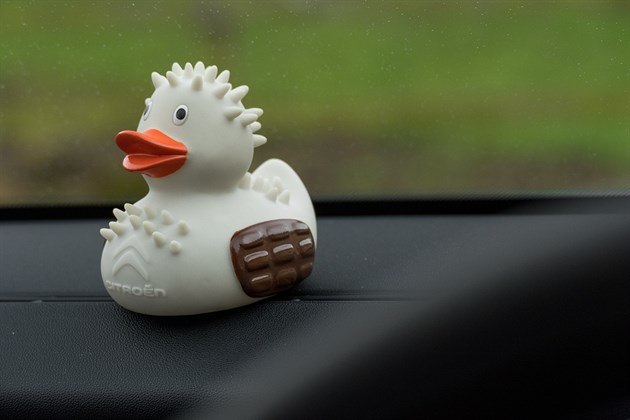
I might be saying goodby to the Cactus, but I'll always have Cactus Duck
Average economy has been around 47mpg over the course of the past six months. That’s short of the official 60.1mpg, but it’s by no means bad. It’s also better than the Real MPG average, which is currently 43.3mpg. I often cover 100 miles at a time on the motorway and constant speeds tend to improve economy, which likely contributes to my overall average.
At motorway speeds the 110PS 1.2-litre PureTech petrol engine is quiet, despite there being only five gears. There’s enough torque in reserve for overtaking slow moving traffic, so there’s not much to grumble about when driving a long way, but back support could be better, necessitating a few extra stops at services.
Motorway driving is also helped by cruise control - which is great when the roads are quiet - and a speed limiter that makes a huge difference in average speed camera zones. The Cactus is also great around town or in car parks, where the famous Airbumps are handy.
And judging by the good state of the bodywork when the car went back, they did their job in tight car parks, protecting Cactus from errant door opening and stray trolleys. They also gave the Cactus its personality and head-turning looks – in fact, the fun, happy character of the Cactus is what I’ll miss the most.
You can read all of the updates on the C4 Cactus from the past six months by clicking here.

